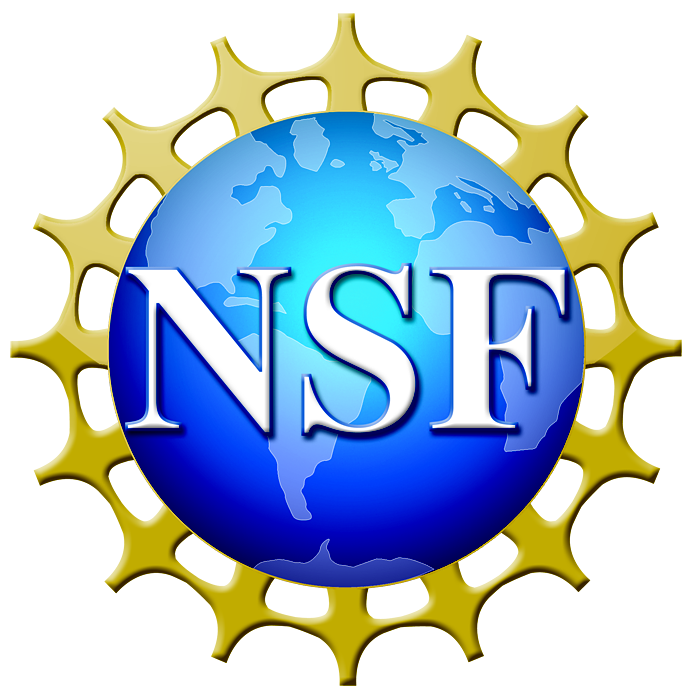- About MAA
- Membership
- MAA Publications
- Periodicals
- Blogs
- MAA Book Series
- MAA Press (an imprint of the AMS)
- MAA Notes
- MAA Reviews
- Mathematical Communication
- Information for Libraries
- Author Resources
- Advertise with MAA
- Meetings
- Competitions
- Programs
- Communities
- MAA Sections
- SIGMAA
- MAA Connect
- Students
- MAA Awards
- Awards Booklets
- Writing Awards
- Teaching Awards
- Service Awards
- Research Awards
- Lecture Awards
- Putnam Competition Individual and Team Winners
- D. E. Shaw Group AMC 8 Awards & Certificates
- Maryam Mirzakhani AMC 10 A Awards & Certificates
- Two Sigma AMC 10 B Awards & Certificates
- Jane Street AMC 12 A Awards & Certificates
- Akamai AMC 12 B Awards & Certificates
- High School Teachers
- News
You are here
PIC Math - Preparation for Industrial Careers in Mathematical Sciences
What is PIC Math?
PIC Math prepares mathematical sciences students for industrial careers by engaging them in research problems that come directly from industry.
The PIC Math program aims to:
- Increase awareness among mathematical sciences faculty and undergraduates about non-academic career options.
- Teach faculty how to make industry connections in order to provide research experiences for their students to work on real problems coming directly from business, industry, or government.
- Prepare students for industrial careers.
A strong component of PIC Math involves students working as a group on a semester-long undergraduate research problem from business, industry, or government. Undergraduate research is a high impact teaching and learning practice and has been shown to improve students abilities in:
- Problem solving
- Critical thinking
- Independent thinking
- Communicating
All these traits and skills are valued by employers of STEM professionals. PIC Math will supply faculty with tools to offer students experiences designed to better prepare them for careers.
Support for this Program
PIC Math is a program of the Mathematical Association of America (MAA) and the Society for Industrial and Applied Mathematics (SIAM). Support is provided by the National Science Foundation (NSF grant DMS-1722275).
What Does PIC Math Include?
Summer Training Workshop for New Faculty
PIC Math includes a virtual summer workshop the week of July 10-14, 2023 for new faculty at U.S. institutions that will provide participants with:
- Information on careers and internships to share with students.
- Guidance on developing business and industry connections and partnerships.
- Exposure to mathematical and statistical problems that arise in industry.
- Training on how to develop skills in students that are valued by employers.
- Preparation for PIC Math’s research course and review.
Spring Semester Research Course
PIC Math provides faculty with resources for a semester-long, credit-bearing course focused on solving industrial problems. Each faculty participant will assemble a team of three to five students and work with them to develop their problem solving, teamwork, and communication skills. Faculty mentoring the research group will receive a $3000 stipend.
Please note that returning PIC Math faculty will not be eligible to receive a stipend from the PIC Math grant.
Student Projects Submission
Each student project team will collaborate with a business, industry, or government partner and will submit regular progress reports. By the end of the spring semester, students will submit a video presentation and written report detailing their solution.
Annual Student Projects Showcase
Students will be given the opportunity to present their results in person at a summer showcase and be recognized for their accomplishments. Students traveling to the showcase along with their faculty advisor will be eligible for travel reimbursement up to $2,000 per institution.
Our 2020 Student Showcase shifted to a virtual setting, and students could then take their presentations one step further and submit their final presentation video to MAA. These final videos, and all of the showcase project abstracts, are available on our 2020 Student Showcase webpage.
Resources for Faculty
Click here to see sample course resources, including syllabi, industry research problems, and supplementary resources.
Previous PIC Math Cohorts
PIC Math faculty cohorts from 2014-2022 had an additional component in their program. The report and video that students submitted were reviewed by industry professionals or academic mathematical scientists who have had extensive experience working on research problems from industry. These reviewers provided feedback on the students’ projects. One previous student showcase was held at the SIAM Annual Meeting while all other showcases were held at MAA MathFest.
How Do I Apply?
To apply for an MAA PIC Math Grant, first-time faculty participants must submit an application through Amplifund, our online application portal. You will need to create a free account within the Amplifund system. If awarded, this account will be used to administer your award, so please be sure to enter all of your contact information correctly. Returning PIC Math faculty who would like to apply for this year's cohort should use the link below. The application is now closed for this year's cohort.
How to Create an Amplifund Account
On the "Application Details" page, click "Apply". On the next screen, click "Register". Enter the information as requested, and read and accept the terms and conditions. You may now complete your application.
Getting Started with Amplifund
Get started with Amplifund by watching this video. You will learn about setting up an account, completing an application, and submitting an application.
Application Requirements
A complete application should include:
- An application form
- A one-page statement of interest
- A letter of support from chair or dean
Click here to see current and past faculty participating in PIC Math programs.
Commitment to Diversity
This program supports underrepresented groups in the mathematical sciences, as well as first-generation and low socio-economic status college students. We are committed to ensuring participant diversity of ethnicity, gender, geographical location, and institution type.
More than one team may apply from a given institution, but because the program seeks to involve as many different institutions as possible, a second team from the same institution will only be considered if space is available.
Frequently Asked Questions
Yes, you will need to create a free Amplifund account in order to apply.
The exception to this would be if your institution already has an Amplifund account. Amplifund is the grants management system for many organizations, not just MAA, so it is possible that your institution’s grants office, or sponsored programs office, has an account for your institution already. If that is the case, please contact that office directly.
On the Opportunity Details page, you will see a button that says “Apply” in the upper right of the screen. Click on “Apply” and then click “Register” on the next screen. You will be asked to enter some information about yourself and your organization (note: for academic institutions please select “Other” as organization type), and then you will be asked to accept the terms and conditions. Once this is complete, you may begin your application.
When setting up your Amplifund account you will be asked for your organization name and type. This organization will be the fiscal agent for the grant you are applying for (usually a college/university). For organization type, most academic institutions should select “Other” unless they are applying as a Foundation or Corporation. If you’re unsure, please contact your grants or sponsored programs office.
No, each institution/college/university should only create one account that everyone should use to apply. We suggest that you contact your grants or sponsored programs office directly to coordinate this.
Please enter "PIC Math Application - [University Name]" or similar.
Yes! At any point while you’re filling out the application form you can download the application in its entirety. Additionally, before submitting, on the final screen there will be a button that says “Review” with a download arrow. Click on this button to download your completed application before submitting.
Amplifund has a built-in safety feature to prevent applicants from missing sections. Each page/section of the application needs to be “Marked as Complete” in order for the system to register that it is in fact complete. There is a button at the bottom of each page/section called “Mark as Complete”. Make sure you have clicked this on each page (when clicked, the button becomes “Mark as In Progress”).
You will receive a confirmation email at the email address you used to create your Amplifund account.
For the spring semester PIC math course at your institution, there must be at least 3-5 students officially participating in the PIC Math program. However, you may have as many students as you want in the spring semester course working on the industrial research problems. In fact, we strongly encourage you to have as many students as possible. In the selection of participants for the PIC Math program, some preference will be given to applicants who plan to have more students involved. In some ways the PIC Math setup is similar to the Putnam Competition. At BYU, we have a fall course/seminar for students who want to solve Putnam like problems. The course/seminar has about 40 students in it. But when it is time for the competition, we have to select 3 official students whose scores count.
There may be more than one professor interested in the PIC Math program. This is great. But each participating professor costs the PIC Math program funds. So, if there are more qualified professors applying for PIC Math than we have open positions, we give preference to professors at different institutions so that we can spread the influence more widely. If there are fewer qualified applicants, than we could support more than one professor at the same institution.
We have been vague on the exact number of credits for the course. This is because we are not sure what is feasible for the various types of institutions. Some professors at smaller institutions have talked about offering a 3-credit course using the PIC Math materials for about 20 students with a subset of 4 students participating in the showcase component of PIC Math. Others have talked about incorporating this into a senior capstone or seminar. And others have talked about doing this as an independent readings course. The idea of the credit course has partially to do with reducing the number of students dropping out of the program in the middle of the semester. My experience is that even if a program is good, students will stop participating when their time gets pulled in different directions. By making the research component into a credit-bearing course for which the students get a grade, the students will take the experience more seriously. We understand that it might be hard to offer a 3-4 credit “readings/research” course that undergraduate students could fit into their schedule. We are okay with a lesser credit course if you are fairly confident that the students will stick with the program for the entire semester (if this is the case, you should briefly mention in your 1-page statement of interest why you are confident).
Some problems will require certain backgrounds (e.g., differential equations, matrices, programming, etc.). A student who is a junior may benefit the most from the program since s/he should have sufficient mathematical background while still having another year to consider career options. However, very prepared sophomore math majors would also benefit.
That is fine. We expect the data to be tentative, but we want a general idea from you about the types of students you might have working on this. We expect that you will officially recruit students during the fall semester.
PIC Math has funding for 1 student to attend the end-of-the-program celebration that will be at the 2024 SIAM Annual Meeting. So, it would be great if an applicant could get your institution to fund another student's travel to the end-of-the-program celebration (and if so, it would be great if this were stated in the chair's letter of support).
Most of the $3000 stipends will be paid by check directly to the PIC Math faculty as a grant consulting stipend. If your institution requires these funds to go through your Sponsored Research office, departmental, or other institutional account, the MAA can make the check payable to them per faculty participant's request. These funds cannot be used towards institutional indirects. Institutions may use these funds for the faculty's salary and benefits, or for a course buyout, as long as the total amount paid to the institution by the MAA does not exceed $3,000. If paid directly to the faculty participant, these stipends are taxable income, and the faculty will be receiving appropriate tax form from the MAA next January. Faculty participants should keep this in mind if considering using these funds for supplies or any other project purposes.
Contact Us
Directors
Michael Dorff, Brigham Young University
Suzanne Weekes, Society for Industrial and Applied Mathematics, Worcester Polytechnic Institute
Darren Narayan, Rochester Institute of Technology
Thomas Wakefield, Youngstown State University
Audrey Malagon, Mathematical Association of America
Please send all questions to Darren Narayan at dansma@rit.edu.










